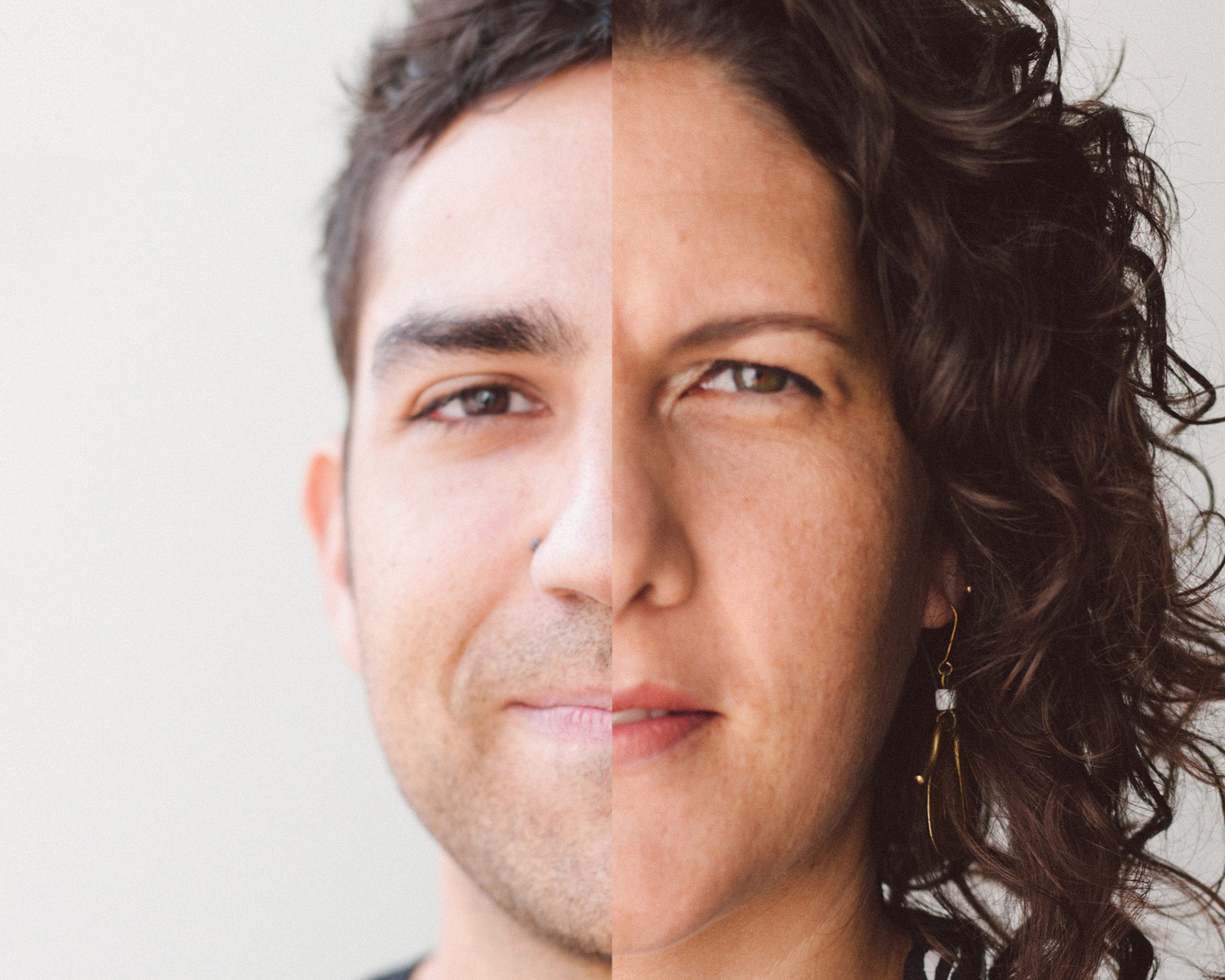
- Interview by Ryan & Tina Essmaker January 21, 2014
- Photo by Jay B Sauceda
Armin & Bryony
- designer
- writer
Born and raised in Mexico City, Bryony Gomez-Palacio and Armin Vit are graphic designers and cofounders of UnderConsideration, a design firm and blog publishing enterprise. Prior to UnderConsideration, the pair worked in the industry for a decade, accruing experience in web, branding, programming, and book and magazine design. Their work has been recognized in numerous award publications and books. They live in Austin, Texas, with their two daughters.
Interview
Describe your paths to what you’re doing now.
Armin: We’re both from Mexico City where, unbeknownst to us, we lived five minutes away from each other, even though we had never met. We both went to college for graphic design in Mexico City, but attended different schools. Our paths first crossed in 1997, when we were introduced to each other by a mutual friend while at a bar. We were two years into our respective design programs. I enjoyed the college I was at, but Bryony didn’t seem to like hers.
Bryony: The college I was in wasn’t challenging enough for me. The teachers didn’t have that much to offer and the students didn’t take the courses very seriously. I was upset with that, so I started looking around for other options. I ended up going to Portfolio Center in Atlanta, GA, where I did two very intense years, which were more to my liking.
Armin: For the record, my school wasn’t serious, either, but I didn’t have a problem with it. My parents were paying for it, so it was fine by me. I didn’t give a crap the first two years. During the first year, we made stamps out of potatoes and I asked, “Why am I doing this?” But then I really got into it; I started creating challenges for myself and learning things on my own, although I still didn’t have any big ambitions at the time.
When Bryony went to Atlanta, I still had a year of school left. She had been my only actual girlfriend and I thought, “I’d better stick with this one.”
Bryony: I hope it was more than that.
(all laughing)
Armin: Somehow, I needed to get a job in Atlanta because that’s where Bryony was.
Bryony: He made the ugliest portfolio ever.
Armin: At the time, I thought it was great. I still have it, and whenever I look at it or show it to people, they say, “Really? This was what got you a job?” But it was 1999, during the dot-com era, so if you knew Photoshop, then you could get a job. Luckily, I knew Photoshop, and I could carry on a decent conversation about design. I got a job at a large Internet consultancy, which was called USWeb/CKS at the time; then it merged and was called marchFIRST. The company had 10,000 people worldwide and 300 in Atlanta. It was a really bizarre place where a lot of things seemed to be going on, but nothing ever got made. The company eventually went bankrupt, so you can get a sense of what it was like just from that.
Bryony: When I graduated, Armin and I were open to go anywhere we wanted. We knew we wanted to end up in New York, but we didn’t think that living there as immigrants working our first jobs was a good idea. We looked around and decided to move to Chicago, where I worked at Bagby and Company. I moved there first, and as soon as Armin figured out visa stuff and got a job, then he moved to Chicago, too—it took a few months, and he bunked with a friend in the meantime.
Armin: As a side note, being from Mexico, we had to have a work visa to be employed anywhere. In the beginning, people were giving a lot of visas in the tech industry and it was easy to find someone to sponsor you, but then, as there were less and less jobs, it became more difficult.
Bryony: You wanted—and needed—to maintain whatever job you had.
Armin: It is hard to move from job to job, because the government makes it hard to jump ship. Anyway, we were lucky to both get visas and move to Chicago. I worked at a small firm called Norman, Inc. It was just me and my boss, and then we grew to four people. It was completely opposite from my last job—it was smaller, more hands-on, and I learned a lot about making things with what I had, because our resources were limited.
Bryony: At Bagby, I was doing a bit of everything, including packaging and advertising. Some of the things were really fun and others were more straightforward, like designing end caps for Best Buy. Overall, it was a great learning experience for me; it taught me how to deal with very small and very large clients, as well as the bureaucracy that goes along with it. Then, as soon as the government said we could switch jobs, we packed up and moved to New York.
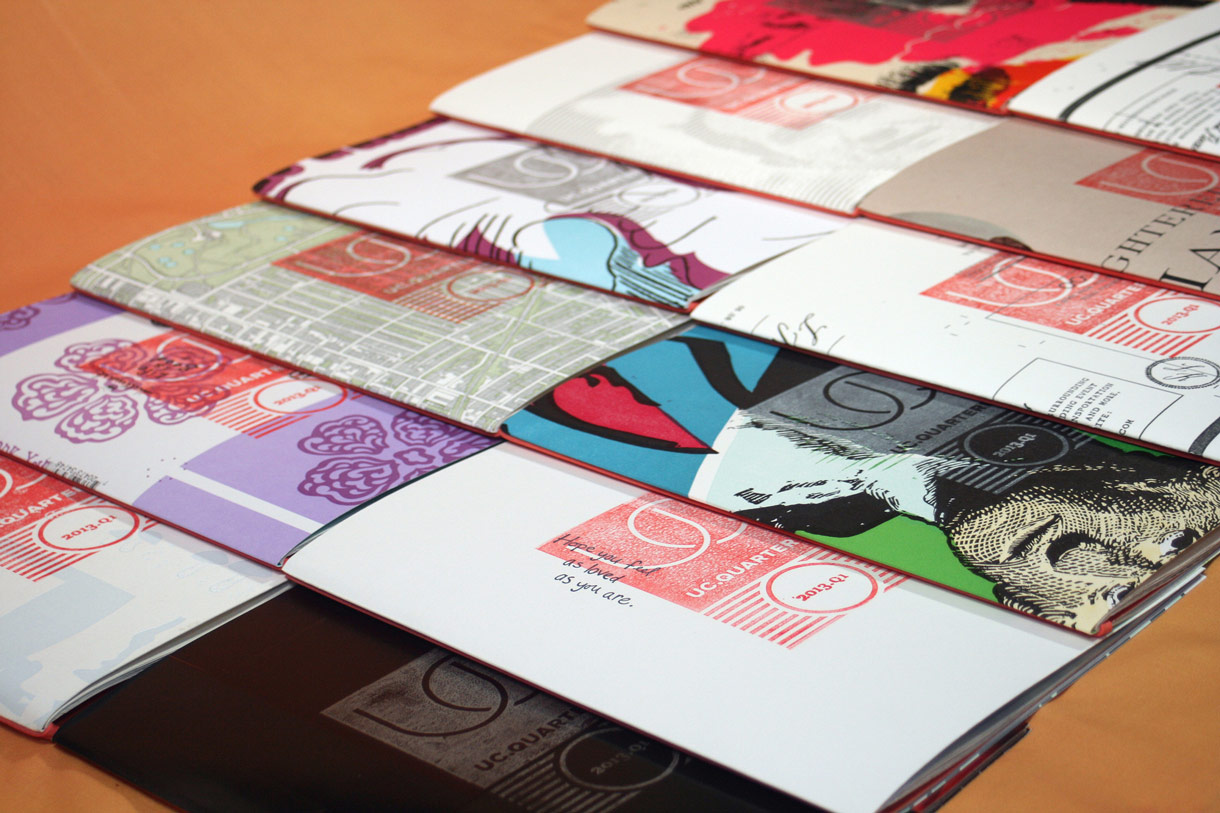
“We had talked about getting rid of clients down the line, but then we decided to do it sooner. We made the decision to focus our energy on creating projects that pay the mortgage, but are also very fulfilling for us.” / Bryony
Armin: Also, it’s important to mention that in 2002 we started Speak Up, our first blog—and one of the first design blogs—before we moved to New York. There were two reasons we started Speak Up. One was that I had a fairly simple job with regular hours, and I had the time to put into it, especially in the winter when Chicago was snowy and cold—you can only read or watch TV for so long. The other reason was that, starting in 2000 or 2001, anything that talked about design online was about Flash. I thought that there needed to be a place online for traditional graphic designers—
Bryony: And a place to question what was out there.
Armin: Yes. I thought there should be a place to question what was out there, and I thought there had to be other designers like me and Bryony, who wanted to talk about design stuff. That’s what led to Speak Up. The first year was a bizarre thing that no one paid attention to.
Bryony: We were trying to figure it out as well.
Armin: We started it in 2001 and it wasn’t until 2002 that it became a blog, and that’s when it started to get some traction.
We moved to New York in 2005. By then, Speak Up was three years old and people were starting to get to know us. Also, in the beginning it was just me doing Speak Up because Bryony’s job was much more demanding.
Bryony: I was a workaholic!
Armin: When we realized that Speak Up was starting to become something more serious, something that we could build on, Bryony started to get more involved. All of a sudden, there was more interest in what we were doing and saying, and it was more relevant; people who were in the profession started to pay attention to it. Because of that, I started to do more public speaking.
Then I started working at Pentagram. I had met Michael Bierut, who was one of the partners and who later became my boss, through Speak Up. He frequently commented and sent me emails on the side saying, “Can you believe what’s going on in the comments?”
Bryony: Actually, we first met Michael through one of the speaker series that we started in our living room while we were still in Chicago. He was in Chicago on business and asked to come by.
Armin: Yes. We had posted about our first speaker event with Rick Valicenti, which about 20 people came to. Michael saw that we were doing it while he was in Chicago, so he asked if he could stop in. He came over with his suitcase and everything—it was a funny, surreal moment.
So, like we said, we had moved to New York. I worked at Pentagram and Bryony was working at Addison, doing annual reports. She was working even harder at that job than her previous one, especially during annual report season, which was from November to April. During that time, I would only see her on the weekends. It’s not that Pentagram was a walk in the park—it was very demanding—but hour-wise, Bryony put in more time than me, which meant that I was still able to put some energy into Speak Up.
Bryony: I was at Addison for a little over two years. Originally, when we moved to New York, I was going to freelance, but I was offered the job at Addison and I love doing annual reports, so I took it. A few years later, I quit and started working as a freelancer. We wanted to be more independent, but it was nice to have one consistent paycheck while I started to build up the business.
Armin: Then, in 2006, we launched Brand New. I posted one or two things a week and, even though it was a spinoff of Speak Up at the time, it has become our most popular blog.
Bryony: When we launched Brand New, we had one book coming out. In 2007, we had our first daughter—and that’s when all hell broke loose. (laughing)
“Everything is a risk when you’re trying something new or walking away from your comfort zone…we think about how much we’re willing to give up…There are things we’re willing to risk and other things we’re not.” / Bryony
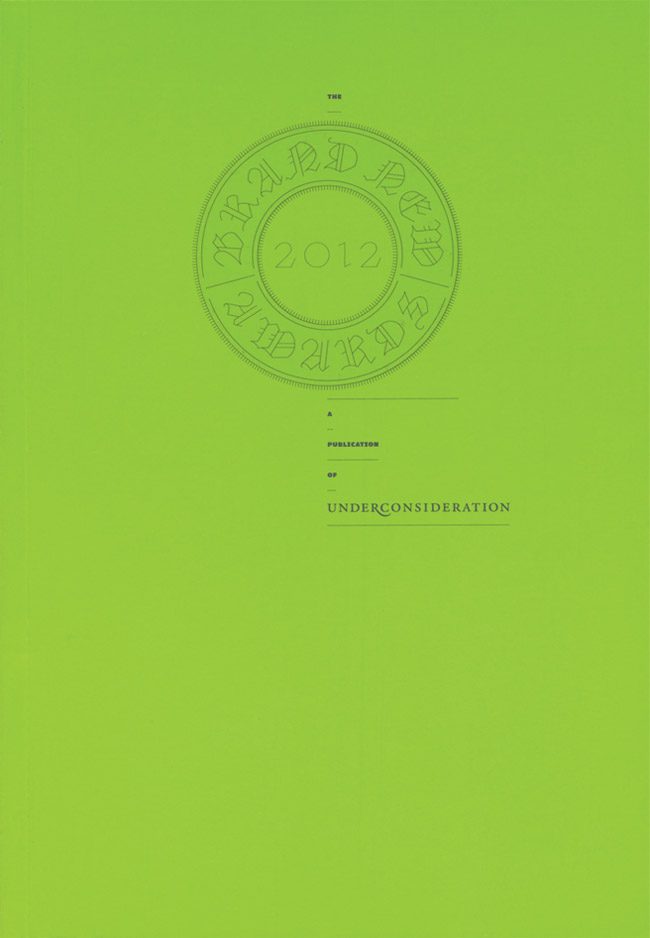
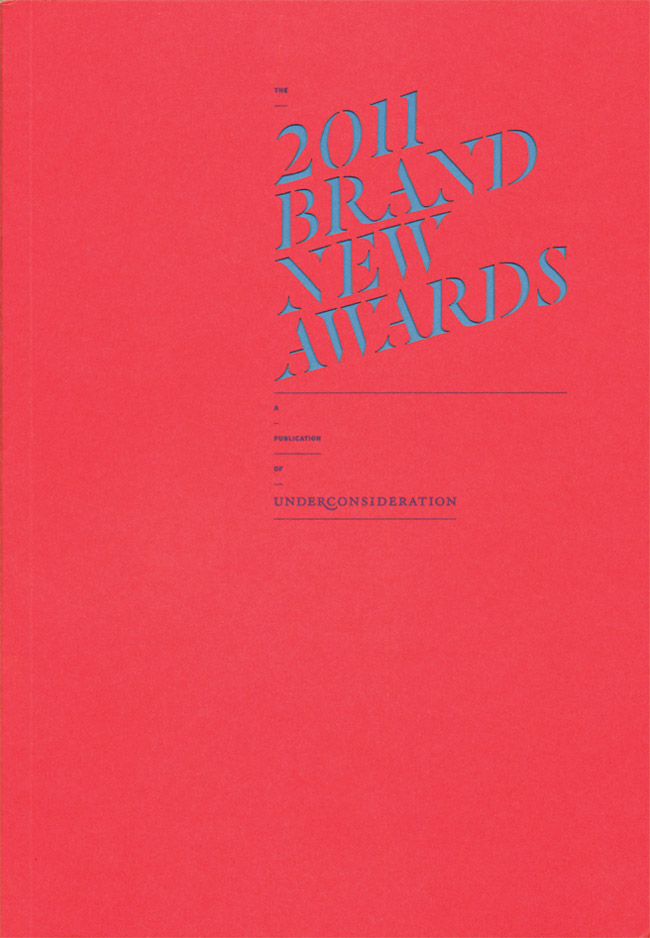
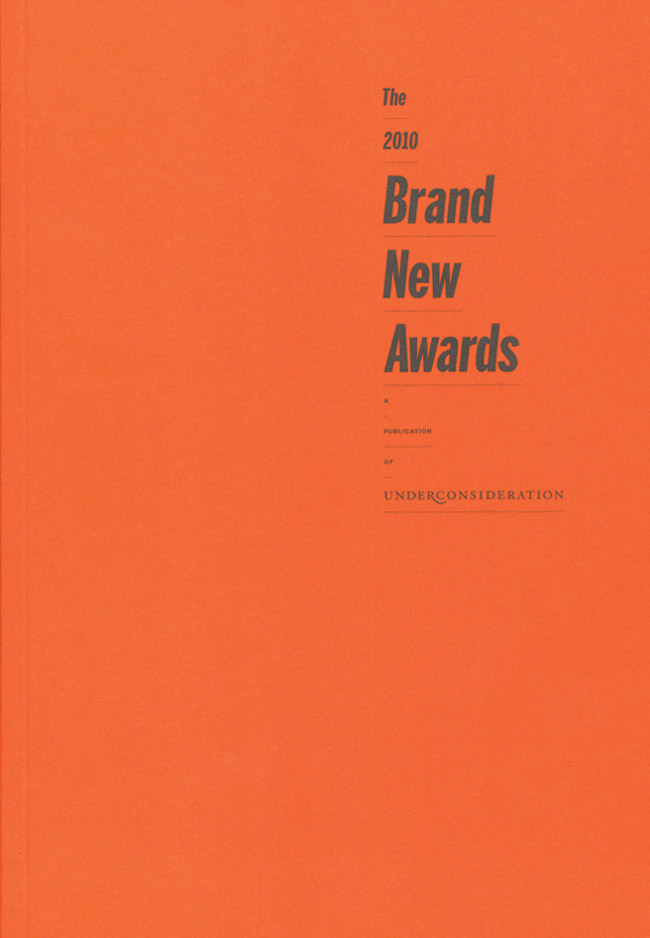
Armin: A guy who I worked with at Pentagram was also going to have a kid, and he found out that we got three months off at half pay for paternity leave. I was only going to take a week off, but I decided to take the whole three months. Why not?
Bryony to Armin: You didn’t know how much work you were going to be doing at home. (laughing)
Armin: I took the three months off and went back. As soon as I was back, I thought, “Man, this sucks.” All I could think of was my three-month-old baby who shits and cries and I had no idea how to make it better other than to be with her. I was looking at my watch all day long, and it wasn’t fair to me or Pentagram. At Pentagram, you need to put in your hours and spend a lot of time making sure the work is great. I wasn’t able to focus on that or care about it because all I wanted to do was be at home with this thing that was new. Our daughter was born in April and I was out of Pentagram by August. That’s when Bryony and I started UnderConsideration as a full-fledged business.
We were at a coffee shop one week and I told Bryony, “I think I want to leave Pentagram.” Right then, we took the little bag that they had given us our muffins in and wrote down where the money would come from. We already had some advertising set up—
Bryony: And I had a few projects. We added up the numbers and said, “Okay, you can quit.”
Armin: We knew we could survive for six months, and after that, we’d either make it or crash. Luckily, it worked out.
Bryony: We were also in a good position because we had left our firms on very good terms and had solid reasons for leaving. That also meant that small projects that came to Addison or Pentagram—projects which were too small for them to manage and be profitable—got passed our way. We were in a good spot to be getting work from them, which meant that we didn’t have to go looking for work all over town. From there, we did a lot of client work for the first year. And then we got two books, which overlapped. We didn’t quite plan for that. We were working on one and then the other came up and we said yes.
Armin: It was basic for a while. We were working a lot, but we were doing it on our own, in our house, and we could see our daughter 24 hours a day, for better or worse. (laughing) All of a sudden our lives were being spent working in our home, at the park, or at the bookstore. We were paying thousands of dollars a month to live in New York, but we weren’t really living and doing all the things you’re supposed to be doing in the city. We had a kid that didn’t like to go to galleries or AIGA events for some reason.
Bryony: We were also becoming more aware of our unique situation after having a kid.
Armin: We decided to leave New York. Deciding where to move was a process of elimination. No more East Coast—it’s too cold. No Midwest—too cold. No West Coast. Not us. That left the stuff in the middle. I remember saying to Bryony, “What about Austin?” and she replied, “Texas?”
Bryony: It took me a year to say I lived in Texas. (laughing)
Armin: We came to visit Austin in January 2009; it was 30°F in New York and 80°F and sunny in Austin. We thought, “Why would we want to live anywhere else?”
Bryony: We planned to move sometime in 2009, and with nice weather and friendly Texans, we placed an offer on a house on January 6, 2009.
Armin: It just felt right. We had also talked to a few people who lived here and they loved it. We moved here in April 2009, and that year was shitty: the economy was horrible and we had finished our client projects and books. Also, we still hadn’t sold our apartment in Brooklyn. We had no clients and two mortgages. Luckily, we got one quick client that helped us make it through that first month.
Then we had to figure out how to get clients. We had never had to do that before—we had always gotten work through referrals. What we found out is that we sucked at it because we had no idea how to do it.
Bryony: We can do very good work, but we don’t know how to sell ourselves.
Armin: At that point, we decided to figure out how to make money from our own projects.
Bryony: We had all these ideas that we had always wanted to do. It seemed like the right time to do them. The first thing we did was Flaunt.
Armin: It’s a book about how to put together a portfolio. It took us six months to put it all together, and it was a $12,000 investment up front to produce it. We invested the money to see if it would work, and it did. It was a book that a lot of people had wanted for a long time and, within four weeks, we had broken even. We continued to make money every week because we sold it as a PDF and book—and the PDF version was selling like crazy. That not only gave us the confidence to do our own things, but the financial backing to do them.
Bryony: It helped us transition. We had talked about getting rid of clients down the line, but then we decided to do it sooner. We made the decision to focus our energy on creating projects that pay the mortgage, but are also very fulfilling for us.
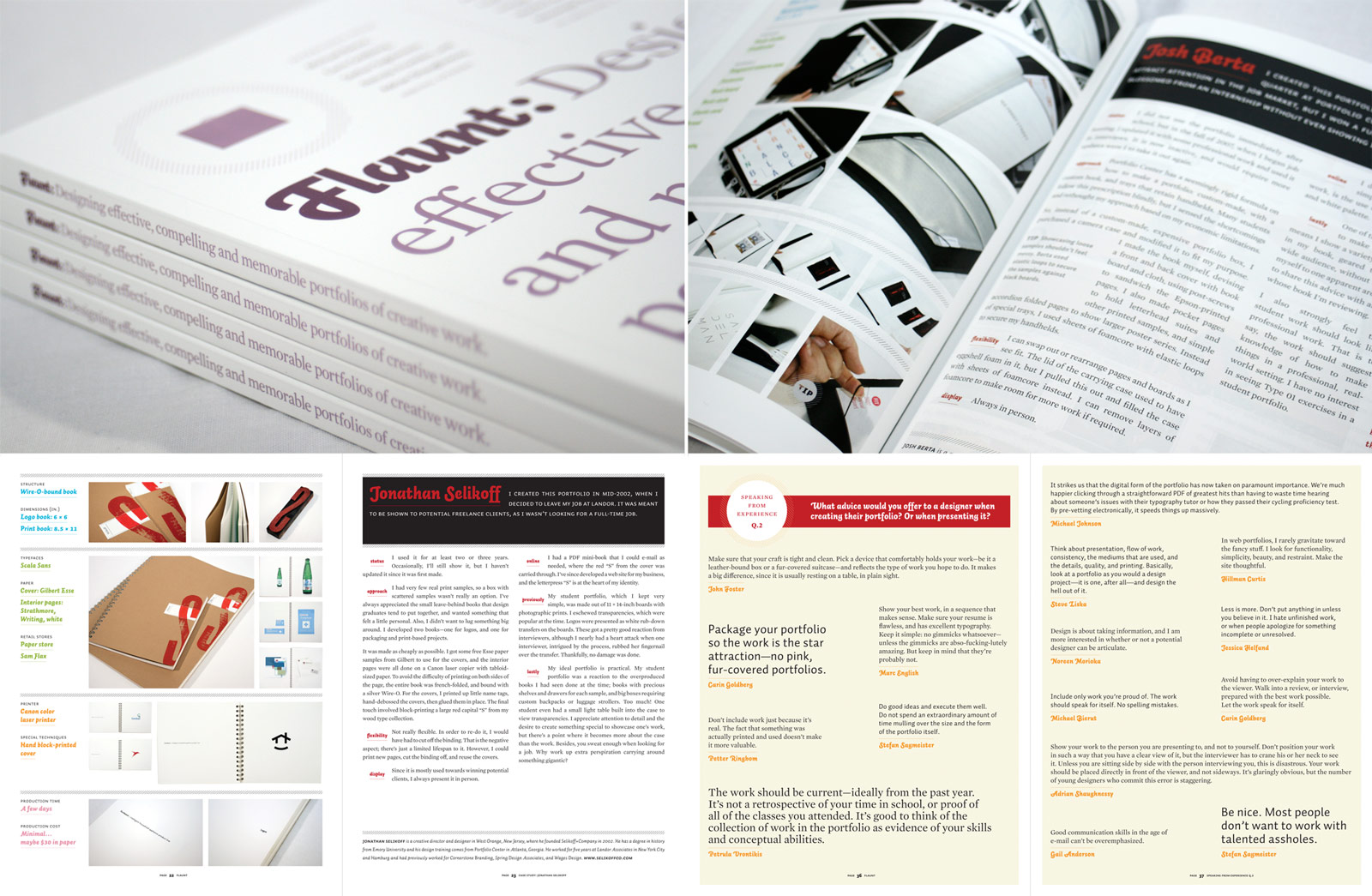
“Now that we have more influence…I think there is more of a responsibility to do things right and set an example. We don’t want to change the world of graphic design; we just want to make it more enjoyable for all the people who do what we do.” / Armin
Armin: In 2009, we started FPO, the blog about print projects, and we had Quipsologies, too. We had a network of four blogs that were getting a lot more page views, and we were able to ramp up the advertising aspect of it. We were making anywhere between $7,500-$10k for advertising, which was a “steady” stream of money coming in—I say steady in quotations because advertisers are still clients and sometimes don’t pay on time. Having a steady source of income meant that we could devote more time to the blogs.
In 2010, we came up with the idea of doing the Brand New Conference.
Bryony: We had talked about doing a conference when we were in Chicago, but we started making phone calls and were asked about insurance for the event.
Armin: Then we just froze and said, “Forget it.” Seven years later, we were ready to give it a shot. We had a really good audience with Brand New and we had a niche that no one else had. We decided to do a one-day conference and keep it simple.
Bryony: It was one of the scariest things we’ve ever done!
Armin: Yeah. On the day of the event, I was walking from the hotel to the venue thinking, “This could go so wrong.” We’d never been in charge of 500 people, 8 speakers, and a full day of events.
Bryony: We’re not very good at spreading the tasks; it’s all just us. On the day of the event, we oversaw everything; we really micromanaged it all. Plus the first conference really came out of our savings because we used EventBrite, which doesn’t give you the money until after the event. That was very scary.
Armin: When we eventually got the money, we thought, “Oh my gosh, we’re rich!”
Bryony: But then the tax man came.
Armin: It was profitable, but no more than what we would earn from a six-month client project. However, we found a thing that was profitable, fun to do, and people liked—it was a moment that gave us a push. Now we had something that could financially take care of a big part of the year and also allow us to create a project that people are interested in.
Ryan: I had the honor of coming this past year as one of Matt Stevens’ guests and you guys did a fantastic job. I don’t usually like conferences, but I really enjoyed Brand New.
Bryony: Thank you.
Armin: Yeah, it’s fun to do. As Bryony said, I even have a hard time delegating to her, and she’s my wife. I think one of the reasons it works is because we put so much energy into it and micromanage the shit out of it. It’s not perfect and there are always things we want to do better, but it’s ours; we’re up there on stage all day and people associate it with us, so we want it to be the best it can be.
We’ve been doing the conference for four years, and now we have all these things: the blogs, the conference, two awards competitions, the books, another kid—we have two daughters now, and they are three and six. And to think that it’s been seven years since we moved out of Pentagram and Addison.
What started as a side project is now a business. It’s Bryony and me, and we usually have a part-time intern. I work full-time, and Bryony works in the morning while our kids are in school. In the afternoon, she takes care of them. In addition to our own projects, we might have one or two clients at a time. It’s not because we need to do work, but they come to us. We’ll take the work on if it’s interesting and pays well.
That’s a long answer to your first question.
Ryan: It comes at an encouraging time for us because we’re in the process of doing some more things in the near future. It’s great to hear your story and the whole process behind it.
Tina: Yes, it is. Alright, question number two. Did you have an “aha” moment when you knew what you wanted to do?
Bryony: When we were in college, we both thought we’d have traditional jobs within the graphic design industry. We never expected this. I did know that I would end up in some kind of creative field, just because of my personality, but it wasn’t until high school when I had a graphic designer as a teacher and she taught me the ropes. That was when I decided to go into graphic design.
Armin: I couldn’t give a shit about what I wanted to study in college. I was a terrible high school student; I barely graduated, and the minimal grade that I needed was what I got. I went into graphic design because it seemed like the path of least resistance—I wouldn’t have to study or write essays.
As a side note, the reason I learned about graphic design was because my dad, who is a mathematician by training, also studied design. He inherited my grandfather’s business, which was selling pharmaceutical products, so he became a businessman, but he was always interested in computers. He bought one of the very first Macs that came out with Adobe Illustrator 88. He started getting interested in design and went back to school to study graphic design while maintaining his business. He went to school early in the morning, went to work, came home for lunch, went back to work, went to evening class, and then came home and did homework. This was when I was in high school. I should have been impressed by my father’s work ethic, and now I am, but at that time, what he was doing seemed less painful than taking tests.
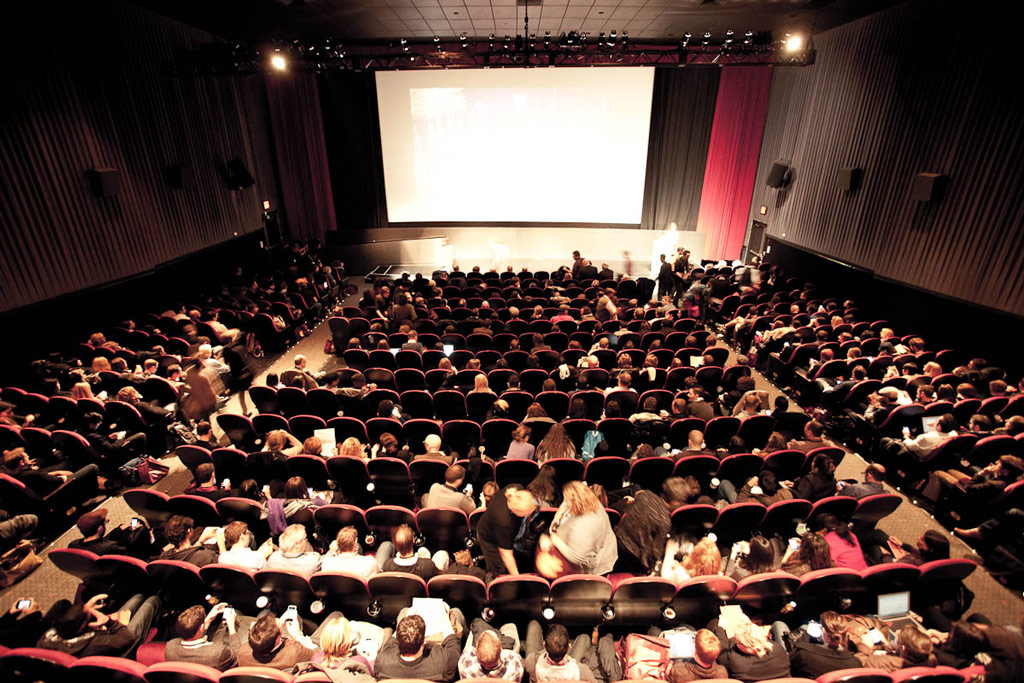
“The conference was our biggest financial risk, but it was a big investment. We’d never done something like that and we thought we were capable, but you don’t actually know until you do it.” / Bryony
Have you had any mentors along the way?
Bryony: I would say that Michael Bierut was a business mentor.
Armin: Michael is great; he is funny, intelligent, and good with clients. He never said, “Come here, young one, I’m going to teach you all I know,” but he was open with me and it was great to see how he worked with clients. Even with over 30 years of experience, he still trusted his instincts about decisions that affected business.
Bryony: I think we’ve had influences, but as far as mentors, I would say Michael has been the only one.
Tina: You’ve taken a lot of risks. What do you think has been the biggest one?
Bryony: The conference was our biggest financial risk, but it was a big investment. We’d never done something like that and we thought we were capable, but you don’t actually know until you do it.
Armin: I think leaving Pentagram was a risk; moving to a new city was a risk. For the most part, I think we take smaller risks nowadays.
Bryony: We do have two kids now, so that minimizes the risks we take.
Armin: It’s not that you become risk-averse, but you ask, “What are we going to get out of this? What are the potential pitfalls and positive outcomes?” We’re less like, “Ah, let’s just do it,” but we do still take risks.
Bryony: Everything is a risk when you’re trying something new or walking away from your comfort zone. For us, we think about how much we’re willing to give up financially or schedule-wise if we take a risk and it fails. There are things we’re willing to risk and other things we’re not.
Armin: For example, the 2014 Brand New Conference is going to be two days in Chicago—this is the first time it will be two days and the first time it will be in Chicago. That’s a big risk. We’re getting a big auditorium that fits a lot of people. It’s double the expenses in certain cases. It’s a risk if we don’t fill the auditorium—to me, it’s worse to have a half-empty auditorium than lose $20,000.
Bryony: Yup.
Armin: I can deal with losing money, but I can’t deal with failing at putting on a show that has energy and a lot of people who want to be there. If not enough people want to go, then it’s going to feel weak in terms of energy. This is the biggest risk we’ve taken in a while, and hopefully it will work. If you’re reading this, come!
Are your family and friends supportive of what you do?
Bryony: Very, very supportive.
Armin: Especially my dad. He never finished his design education, but he has a huge design book library. When I told him I was going to go work at Pentagram, he literally freaked out, “Oh my god, Pentagram! What partner?”
Bryony: Our families pull out our books any time a friend or other family member comes over. They’re very proud.
Armin: Yeah, and my dad always buys our books, even though he’ll get a copy anyway.
Bryony: Also, one of the conference expenses is flying my mother here to watch the kids while we’re away. Being in the same business together means that we sometimes need to be in the same place at the same time, away from home. Our family steps in and helps out a lot.
Armin: Most of our friends from the last decade have come from everything we’ve done. We’ve become good friends with Debbie Millman, Marian Bantjes, and Michael Bierut—we know all the people we know through design.
Do you feel a responsibility to contribute to something bigger than yourself?
Bryony: I wouldn’t say “something bigger than myself,” but if I’m going to contribute something, then it better be quality. If my name is going to be associated with it, I don’t want crap out there.
Armin: Now that we have more influence, to whatever degree that influence is, I think there is more of a responsibility to do things right and set an example. We don’t want to change the world of graphic design; we just want to make it more enjoyable for all the people who do what we do.
Bryony: But there’s no big agenda.
Armin: No, we don’t have any altruistic purposes.
Are you creatively satisfied?
Bryony: I think Armin is more than me. For lack of a better word, I’m making the sacrifice to spend a lot of time with my kids, especially in their formative years. I do a lot of the admin and management of the business while Armin gets to do more of the creative stuff. But we do collaborate and a lot of the things that come out are because I said yes or no. (laughing)
Armin: With design, things take a long time to simmer, and Bryony works five hours a day, so it’s tough to have the time to let them simmer. Bryony gives me a lot of feedback and she’ll say things like, “That shit is boring. Don’t even show it to me next time.” What’s nice about that is that you tiptoe around issues with coworkers and say things like, “That’s interesting,” which means it’s shit, but you can’t just come out and say it. With Bryony, we have to go to the same bed at the end of the day, so we have to be okay with it. It’s nice to have someone who is just as invested and has the same goals. She can say, “No, that’s not good enough,” or, “That’s great. Go for it.”
Bryony to Armin: I think that sometimes you’re scared about going way crazy, and I encourage you to go there.
Armin: To answer your original question, I am satisfied—mostly because I get to do whatever I want. I don’t have anyone else setting the agenda. It’s nice to do what you want and do it in a timely manner.
At the same time, because we’re small, I’ve gotten really good at Excel. Now I get excited about setting the margins of the cells and stuff like that. I’ve gotten better or at least I’ve acknowledged that I need to have these organizational tools that I used to not have or care about. Even that becomes satisfying in its own mundane way.
Bryony to Armin: Finally! Thank you!
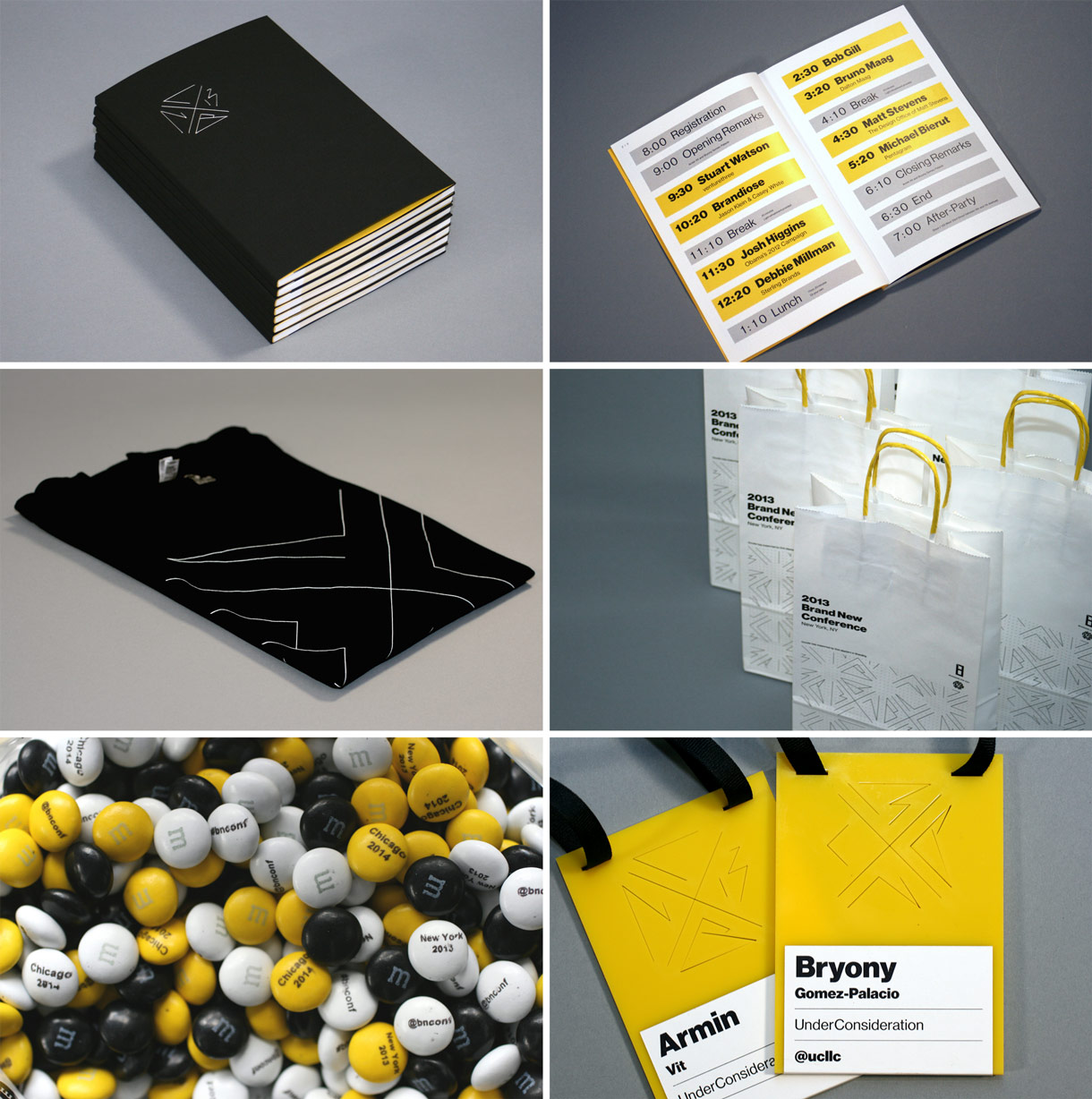
What advice would you give to someone starting out?
Bryony: Go work for somebody. Whenever we do workshops about portfolios, I hear a lot of, “I want to go and do my own thing right out of school.” I think there’s a lot to be learned from other people, on other people’s dime, where there is someone to catch your mistakes or show you better options. Can you do it by yourself? Absolutely, but it’s easier and you can learn more when there’s someone there, giving you pointers and leading by example.
Armin: What I would say is to work harder than the next person. Someone is going to work harder than you, but you need to work harder than someone else. That has really worked for me. What I always acknowledge is that I’m not talented; I don’t have the creative talent that someone like Jessica Hische or Sagmeister or Victore have. There is this thing that comes out of them and they’re able to make something that’s visually exciting just because they can. I don’t have that. I have to work really hard to get to something, and the only way I can do that is by spending more time coming up with or refining ideas. It really is about putting in the hours and beginning when you’re young. Put in the hours at night and on the weekend to do something on your own and learn your craft. This whole idea that you have to find a balance between life and work—they go hand in hand, so you have to be able to let one influence the other.
Bryony: Yeah. It’s not always going to be 50/50. Depending on where you are in life and what you have going on, your work/life balance could be 80% work and 20% life. But work is part of your life, so you have to let them come together.
How does Austin impact your creativity?
Bryony: Creativity? Nah.
Armin: I think it’s more relaxed here and that plays a role in what we do. There’s not the cutthroat competition here like there is in New York. We’re more relaxed and don’t have the pressures of satisfying a boss.
Bryony: But that could happen anywhere. (to Armin) I do think your mental state within the office is a lot more relaxed, but I don’t think it impacts your creativity. We don’t go around looking for inspiration for our next project.
Armin: Hmm, I don’t know. It’s not like you go out on the street and see anything amazing or are in awe of the way people dress. If anything, Austin can be horrible in the sense that everyone walks around wearing the awful burnt orange University of Texas (UT) color all the time. Choose another color. That color looks good on no one—not even Kate Upton. People wear it all the time and it’s crazy.
(all laughing)
Is it important to you to be part of a creative community of people, and do you have that in Austin?
Bryony: We do feel like there’s a need within the Austin community for more interaction. We’re actually starting a lecture series that begins in six weeks. (to Armin) Do you want to talk about that?
Armin: Sure. First, let me say that it’s a little bit of both extremes for us in the sense that we work at home and are busy with the kids, so that doesn’t give us a lot of time to hang out with other adults in our profession, which is fine. We did that a lot in New York. But on the other extreme, our business relies on the design community and we’re very aware of the need for interaction to stay relavant in the community. That’s why we’re active online, why we go to conferences, and why we give lectures. We live in those two extremes.
Going back to what Bryony was saying is that there were no local AIGA events we wanted to go to. It’s half a knock on the local AIGA and half a knock on what people want. So we started the Austin Initiative for Graphic Awesomeness. Every two months, we’ll bring in a speaker and there’s no agenda about who it has to be. We’re just bringing in people who are doing awesome things that we wish we were doing. It’s as simple as that.
Austin CreativeMornings is here now, and I think that’s helping, too. They’ve done a great job since they launched. Those kind of exercises and movements are helping the creative community move beyond just AIGA.
Tina: The speaker series sounds really cool! So, what does a typical day look like for you two?
Bryony: Ooh! (laughing)
Armin: It sounds horrible. I wake up at 5am—
Bryony: He makes coffee and then I wake up.
Armin: After I make coffee, I just shake her and say, “It’s ready!”
Bryony: Why make my own coffee when there’s a handsome man to make it for me? (laughing)
Armin: From 5–6:30am, I write the Brand New post, which is written fresh every day. Bryony starts doing her admin stuff. At 6:30am, we wake the girls up, take them to school, and usually go for a run. Then we’re back working around 8:30–9am.
Bryony: Then I work till 12:20pm.
Armin: It’s very militaristic. At 12:20pm we break, no matter what.
Bryony: Then we eat lunch and go get the kids. From 1pm onwards, I’m with the kids, until they go to sleep.
Armin: At 1:30pm, the intern comes in. At 5:30pm, the day is over. Even if I’m not done, I’m done. We cook, eat dinner together, bathe the kids, watch TV with them, then read them a story. The only way to do all of that is to stay on a strict agenda. It sounds horrible, but it works.
Bryony: And it works well for the kids, too, because they can look at the clock and know what’s next.
Armin: The kids are hopefully asleep by 8:15pm and then we go back to emails and more mundane admin stuff that we can do while half asleep.
Bryony: Then we eventually go to bed, wake up, and do it all over again.
We do respect the weekends, though. Not more than two or three times a year does one of us need to work a few hours on the weekend to get work done.
Armin: There are times when I’m here working all week, except for going out to get the mail or going for a run. So, on the weekends, we make a distinction—no work. We take a break.
Bryony: It’s time to decompress and be with family.
“…work harder than the next person. Someone is going to work harder than you, but you need to work harder than someone else. That has really worked for me.” / Armin
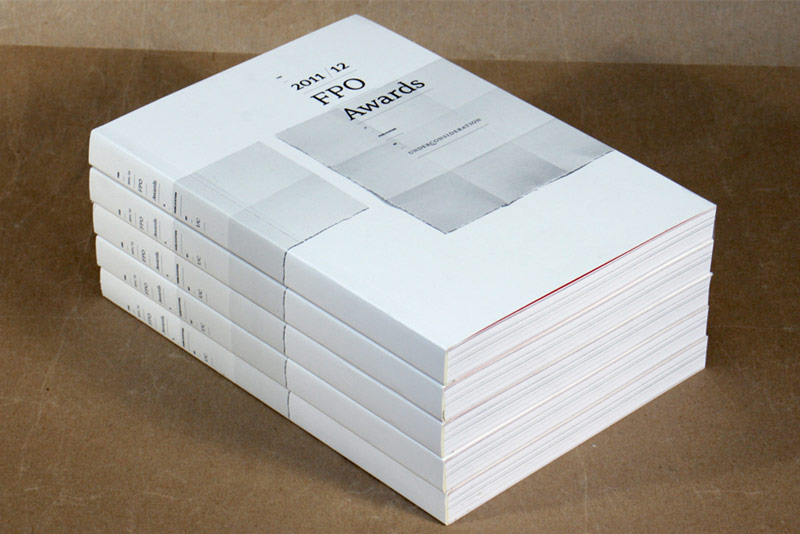
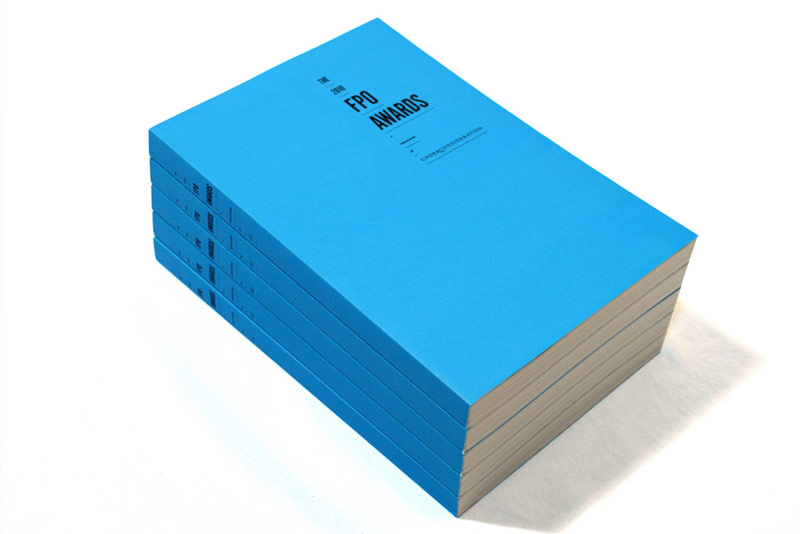
What music are you listening to?
Bryony: I listen to a lot of Mumford and Sons. I also like classical and folk music.
Armin: I listen to music about 20% of the time, maybe less, because I can’t really concentrate with music on. My music library is still in the 1990s. If I need to get pumped up, I’ll listen to The Black Album from Metallica, (laughing) but that’s how bland my musical tastes are. I follow Frank Chimero on Twitter and he’ll mention some obscure band or musician, and I’ll think, “Who the fuck is that?” I have no idea what’s going on. In terms of music, I am the least exciting designer.
Do you have a favorite TV show or movie?
Bryony: That is one way to decompress. I don’t care for TV that much, though, so I don’t have a good answer to that question, but, um—
Armin: I love TV. If I could watch TV for a living, I would. What I’ve noticed, too, is that since I’ve had kids and they’re both girls, everything is too pretty, too girly, too fragile, so I need to watch something that’s fucked up: Breaking Bad, The Walking Dead, The Wire. I missed The Wire and Lost when they came out because, for some reason, Bryony convinced me to not have a TV when we moved to New York. When we got Netflix, I binge-watched Lost, 24, and Sons of Anarchy. I love shows that are too intense for most adults and especially little kids. I need that contrast in my life.
Bryony: I have enough stress that I don’t need anything else intense in my life. The other thing is that it’s very hard for me to actually sit through a movie.
Do you have a favorite book?
Armin: Bryony is the reader.
Bryony: Now this is my question. Damn, that’s a hard one. John Steinbeck is one of my favorite authors. I like to be transported to other places. I love history books that go into depth and books about schizophrenia or multiple personality disorder—I find it fascinating to see the world through someone else’s perspective.
Armin: Over the holidays, I read Live From New York: An Uncensored History of Saturday Night Live, as Told By Its Stars, Writers and Guests, and it was great. It was one of the best books I’ve read in a long time. When I was a kid in Mexico, I would binge-watch SNL in the summer because we had a satellite dish that had American channels. A lot of what I know about American culture was because of SNL in the early 90s—I thought everyone was like Chris Farley or Mike Meyers. (laughing)
What’s your favorite food?
Bryony: I’m not sure if I have a favorite food, but I do like anything spicy.
Armin to Bryony: You like avocado.
Bryony: Yeah, I do. I’m not one that attaches to things, hence no favorites on just about anything. I take what I am offered, and keep it simple that way.
Armin: I like milk chocolate, and the cheaper, the better. If it’s greasy and sugary and wrapped in tin foil that looks like a soccer ball, I am so there!
Bryony: Those are disgusting!
(all laughing)
One last question. What kind of legacy do you want to leave?
Armin: One that proves that you don’t have to do things the standard way. Not to sound cheesy, but one that says you can follow your dreams or passion projects and, somehow, they will pay off. One that shows that you can do something without it being about money. If you do something you’re passionate about, then something good will happen—what that is, who knows?
Bryony: I think about that for our kids. I want them to be able to say, “I can do whatever I set out to do.” I want to lead them by example and show them that being different is okay, that doing things in a different way is okay, and that you can tap into your creativity to figure things out, without caring what people think or say.

“…you can do something without it being about money. If you do something you’re passionate about, then something good will happen—what that is, who knows?” / Armin